Scalar and Vector quantity
There are many physical quantities in Physics. Like pressure, density, force, speed, temperature, acceleration, etc. These quantities can be classified into two categories- scalar and vector quantities.
Scalar quantities are those which have only magnitude. For example, density, temperature, distance, speed, pressure, etc and vector quantities have both magnitude and direction associated with them like force, acceleration, velocity, etc.

This section will learn about vectors and their properties in detail.
Position and displacement vector
Position vector
A position vector is defined as a vector that symbolizes either the position or the location of any given point with reference to the origin. The direction of the position vector always points from the origin of the vector towards the given point.

For example, Suppose an object is placed at coordinate (2, 3,4 ) in a rectangular coordinate system. The position of this point can be expressed as position vector
Displacement vector
The change in the position vector of an object is known as the displacement vector.
Suppose an object is at position A at time t=0 and after some time ‘t’ it reaches position B. Let the position of A is
(
Position vector of A = OA= (
Position vector of B= OB= (
So the displacement of AB is given by displacement vector AB
AB= OB-OA =
The displacement of an object can be defined as the vector distance between the initial point and the final point.

Suppose an object travels from point A to point B via curve path in pink. The displacement of the particle would be the vector line AB headed in the direction A to B. The direction of the displacement vector is always from the initial to the final position.
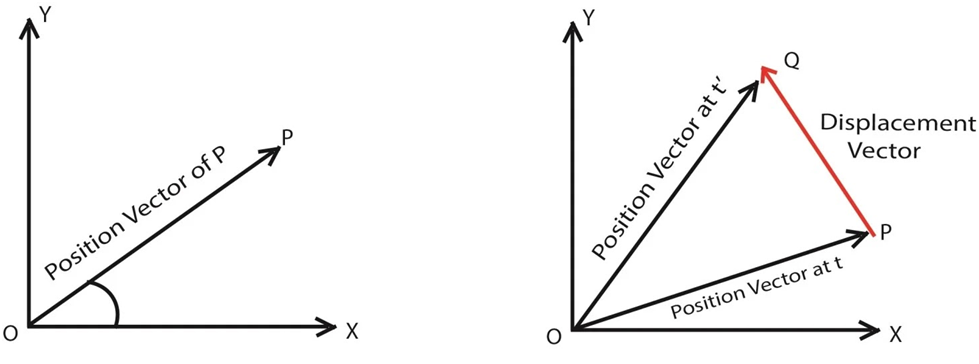
General vector and their notations
A vector has both magnitude and direction. The length of the vector represents its magnitude and the tip of the vector specifies its direction
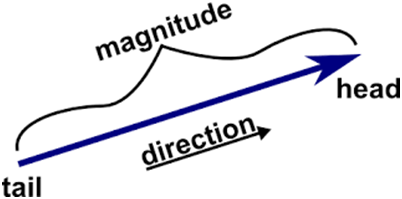
In cartesian coordinates, we generally express a vector in 3-D in terms of its projection along the x, y and z-axis.
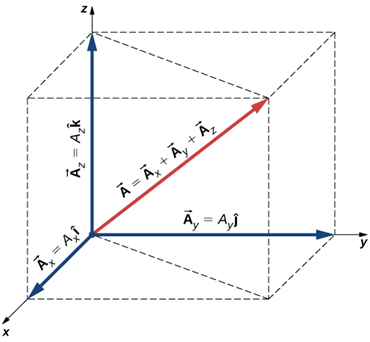
In the figure given above Vector
Here Ax, Ay and Az is the projection of vector A in direction x, y and z.
Equality of vector
Two vectors are equal if all the components of the vector are equal. In other words, if both the magnitude and direction of the vector is equal then only two vectors are equal.

Negative of the vector: The vectors and their negatives have the same magnitude but opposite directions.

Vector addition: Always add vectors from tip to tail. Place the tip of the first vector next to the tail of the second vector. The Result is the sum of the first two vectors.
Vector subtraction: When we have to subtract two vectors : A- B = A + (-B) . Then first take the negative of the second vector and then add them according to the rule of vector addition.
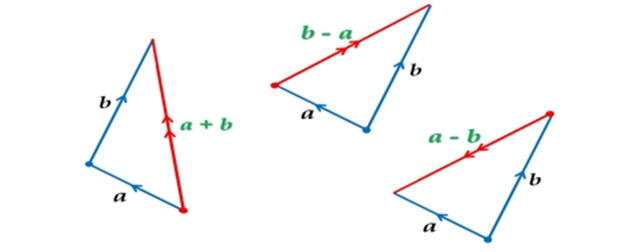
Vector addition and subtraction in 1 dimension
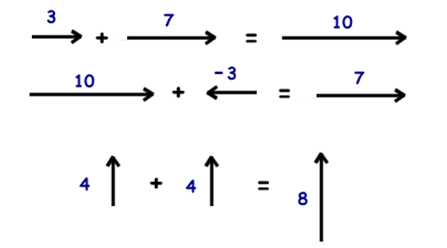
Vector addition subtraction in 2 dimension
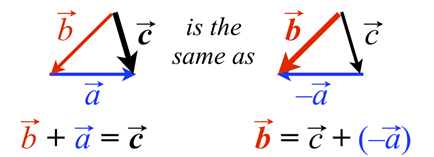

 Madhava Publications
Madhava Publications
